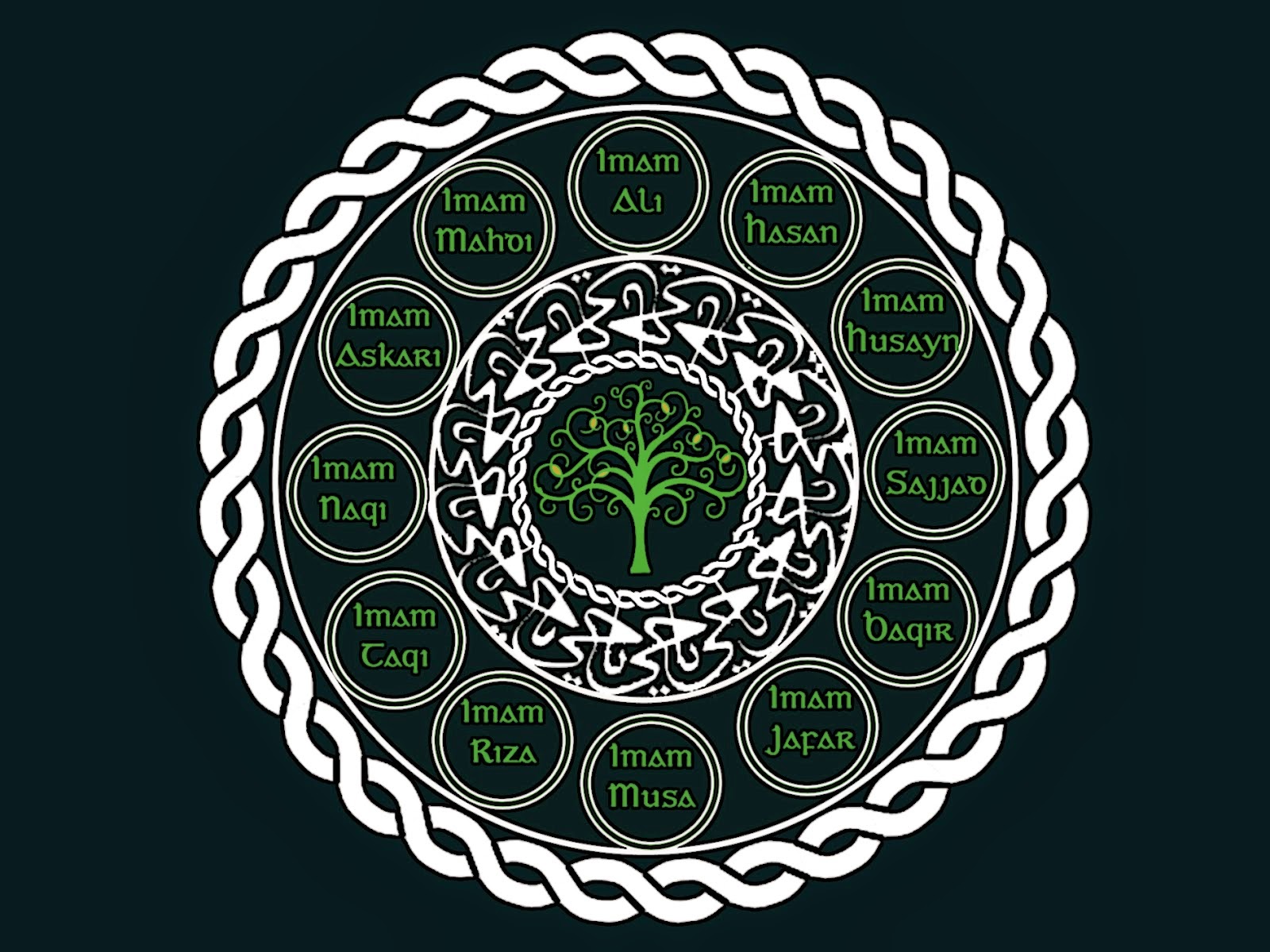Every human being receives the word and light of God but we receive these gifts to varying degrees.

God chooses certain human beings and purifies them to become the recipients and conduits of knowledge and guidance for the sake of others. Those people who receive the ultimate degree of this light are the Prophets (AS) and their co-workers the Imams (AS). Their purification is such that they are without any kind of sin from birth onwards. The intensity of their knowledge shows them the consequences of sin and thus they do not sin throughout their lives. They are sinless (impeccable) and also free from error (infallible); the technical Arabic term used is Ma’sum. They are thus free from any doubt or weakness, and empowered and purified by God to become guides to the rest of humankind.
The Prophets (AS) sent by God receive direct revelation from God. They are thus the bearers of scriptures and the light to interpret them and fully to put them into practice. At least one such Prophet has been sent at some time in human history to all the peoples of the earth. Muhammad spoke of 124,000 of such Prophets (AS) in total although the identities of the vast majority are unknown to us. The Quran names twenty-five of them. The same light of prophethood filled each one of them until the last, universal, seal of the Prophets (PBUH) came in the person of Muhammad. Then the ministry of prophethood was completed. These Prophets had co-workers or successors, who shared in the fullness of the light of knowledge and purity; they were the Imams (AS).
God showed through the Quran and Muhammad’s (PBUH) own words and actions that his successors should come from the Ahl Al-Bayt (AS). The term Ahl Al-Bayt (AS) literally means the household or family of Muhammad (PBUH) and technically refers to a group of his blood descendants through his daughter Fatimah (SA) and her husband, Ali (AS), who was also the cousin of Muhammad (PBUH) (they shared a common grandfather). God chose and blessed the Ahl Al-Bayt (AS) and their descendants for spiritual leadership of the Muslim community, the Imamate, just as earlier God had chosen Abraham (AS) and his family to bring forth a line of Prophets (AS). Ali (AS) was appointed by God to be the first in the line of successors to Muhammad (PBUH), the line of Imams (AS).
According to the majority school amongst the Shia, there were twelve Imams (AS) in this line. They speak of “the fourteen sinless ones” (Ma’sum) referring to Muhammad (PBUH), Fatimah (SA) and the twelve Imams (AS). They were to guide humankind after Muhammad (PBUH) through the light that they possessed. They did not bring anything new but they shed light on the revelation that came to Muhammad through their knowledge and by their actions. Without such guides, human beings of lesser degrees of knowledge and purity would be bound to go astray because human beings are naturally forgetful and pulled down by their lower self (Nafs). It would be fundamentally unjust of God to leave human beings without a guide; therefore the line of Imams (AS) will continue until the end of the world.
The human condition
The word and the light of God, sent through Muhammad (PBUH) in the Quran and through the Prophet (PBUH) and Imams (AS) as the living embodiment of that guidance, are for the benefit of human beings so that we might attain to our full potential of wisdom and purity of thought and action. Human beings stand at the pinnacle of creation [see the illustration of the human figure on the globe] and have the twin duties to be the servants of God (Abd) and the regents of God on earth (Khalifa). As such, we have the responsibility to cherish the creation and bring it to its full God-given perfection. This guidance works on the heart of human beings to transform us in knowledge, intention and action [see the inset illustration of transformation].
The heart is seen as the seat of knowledge and intention with the capacity to be manifested by the will to act according to that guidance. Human life is thus to be seen as a journey of transformation and manifestation. Just as Muhammad (PBUH) is the embodiment of perfect humanity (Al-Insan Al-kamil), so he makes present the full human potential towards which all other men and women are to strive. Under the guidance of the ever-present Imam, we are to grow into the Muhammadan nature, which the Prophet exemplified. The high dignity of every human being is to have the capacity to know the attributes of act of God and to manifest them in our lives. Through living a life of obedience to God’s guidance, our hearts are polished to become like perfect prisms through which these attributes are made manifest and shown by the quality of our actions.
Two Precious Things
Muhammad said that he would leave two precious things after him to guide humanity: the Quran and the Ahl Al-Bayt (AS). These two are the on-going deposits of God’s guidance on the earth after the time of Muhammad (PBUH). During the years when the line of Imams were visible on earth, 632-941, they were like a light of God’s guidance that shone on the Quran and correctly interpreted and implemented it in human living [see the illustration of the light shining on/through the Quran to illuminate the straight path]. They developed and laid down a way of life (Shari’a) and theology that would guide human living to ascend in spirituality, knowledge and purity of intention and action. Through the purifying gift of knowledge they were sinless (Ma’sum) and thus could act as infallible guides to humankind. They not only made clear the inner dimensions of the message of the Quran but they also confirmed the practice of Muhammad (PBUH) [Sunna] and themselves embodied that message so that they could act as perfect role models and conduits of God’s guidance for later generations.
By the time of the disappearance of the last Imam in 941, they had laid out a complete way of life, spirituality and knowledge that acted like a platform running on the twin tracks of the Quran and the exemplary lives and wisdom of the Ahl Al-Bayt (AS) that could guide humankind thereafter [see the illustration of the platform on unequal rails]. The last Imam (AJ) is not absent but is hidden from our sight during the passage of time in which we now live. He is in hiding, not because God wanted to withdraw his grace from humanity, but because humanity in general is not receptive to that grace and would reject or kill the Imam if they could reach him. Human beings are thus deprived of the interactive presence of the Imam (AS); he cannot be consulted for infallible guidance at this time. But he is present “like the sun hidden behind the clouds” and thus in a mysterious way serving as on-going guide. Even though we cannot see the sun hidden behind the clouds, we are conscious of its presence, day and night, without which life on earth would come to an abrupt end because we would be deprived of it as the source of energy on earth.
During the time of the Hidden Imam (AJ) there is no infallible guide available for consultation on earth. We have to rely on the deposits left to us in the Quran and the Sunna of the Prophet Muhammad as preserved and implemented by his Ahl Al-Bayt (AS). The Quran and Ahl Al-Bayt (AS) act like the two rails of a railway track guiding humankind. If they separate even by a tiny amount, the train would fall off the track. If only one rail is present, then the train could not run at all. The guidance of the Imams is in a sense diminished due to our inability to contact and receive infallible guidance from the Hidden Imam, hence the disproportionate size of the two rails during this period. For as long as the Imam is not accessible, guidance must come from the scholars of the community. The highest in rank of these scholars are the Ayatollahs who, though fallible, are held in high esteem due to their knowledge and piety. In every age, a small group of these, who are regarded as being of outstanding learning and pious life, take on the responsibility of giving guidance that others can follow; such are called Grand Ayatollahs (Marja).
The final phase in the history of the Imams (AS) will come when the Twelfth Imam reappears as the Imam Al-Mahdi (AJ) in the final period of human existence [see the illustration of the question-mark]. No-one knows when this time will come; it will be at God’s direction. During this final messianic period, Imam Al-Mahdi (AJ) will exercise direct rule for all humankind and be once again accessible as the Living Imam until the end of the world.
The final goal of human existence
Through a process of transformation brought about by following the twin guidance of the Quran and Ahl Al-Bayt (AS), the human being grows in wisdom and purity [see the illustration of the ever-ascending quest towards the infinite God]. This is a drawing ever-closer to God through the practices of Islam, deeper obedience and worship, and increasing knowledge of the attributes of God, which is as far as we can grow in this life. Human beings then pass through the doorway of death into the next realm of existence; the timeless waiting state of Barzakh. Here there are new experiences that purify the soul in preparation for resurrection. At the end of time will come the general resurrection when all human beings will be raised to a new form of life, a higher calibre of existence, which is unintelligible to us now. The seeds that we have planted in our souls in this lower life will flourish and bring forth foliage. Then we will stand before God with that fully developed soul, which will be beautiful for some and ugly for others; and in this way we will experience judgement.
For those judged worthy, through the mercy of God, a new paradisiacal realm will open up in which the soul will continue to ascend in purity and wisdom in ever-closer proximity to God. God is infinite and thus knowledge of God knows no limits, so the journey of encounter continues infinitely, revealing dimensions and wonders beyond our imaginings or expectation. The transition from one phase of human existence to the next expands the perceptions open to human growth and experience; it is as though we have moved from our womb-like experience before birth into the air-filled sentience of earthly life, or the transformation of an earth-bound caterpillar into the air-borne world of the butterfly. The human being continues to grow through these new dimensions becoming ever-more fully human with the transformation of our true selves by taking on and manifesting the divine qualities in an infinite progression, through God’s grace, drawing into a closer embrace of the divine attributes of act, but always remaining a creature and never being able to penetrate through to the essence of God, which for ever remains beyond our ability to grasp.
Source: en.shafaqna.com

